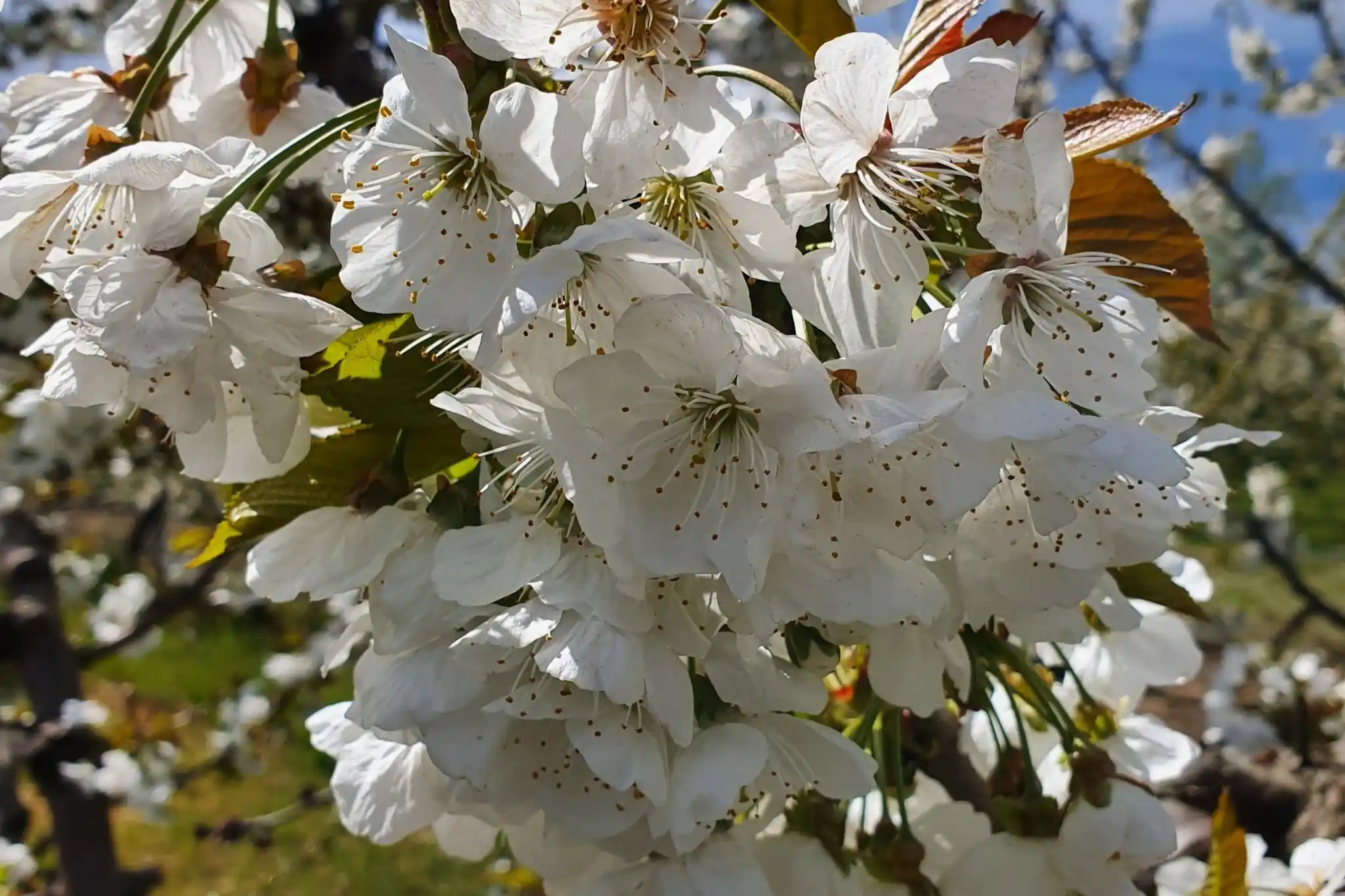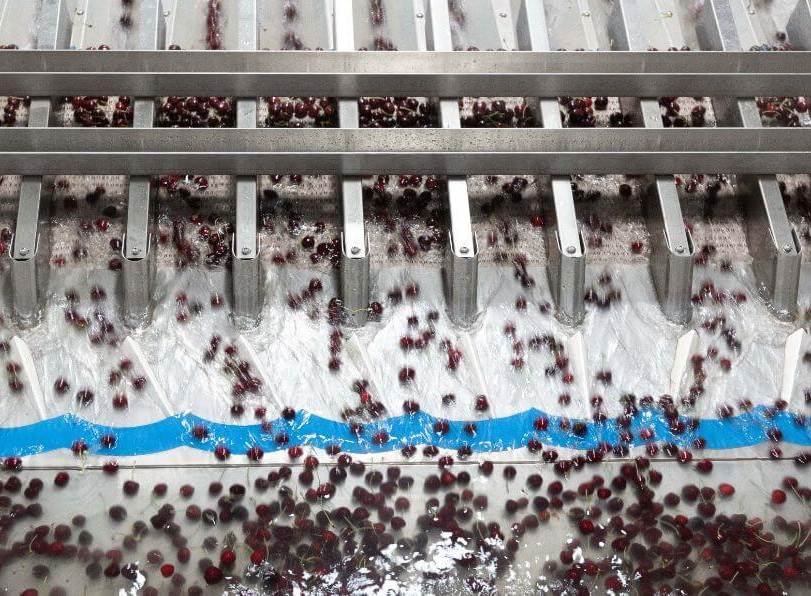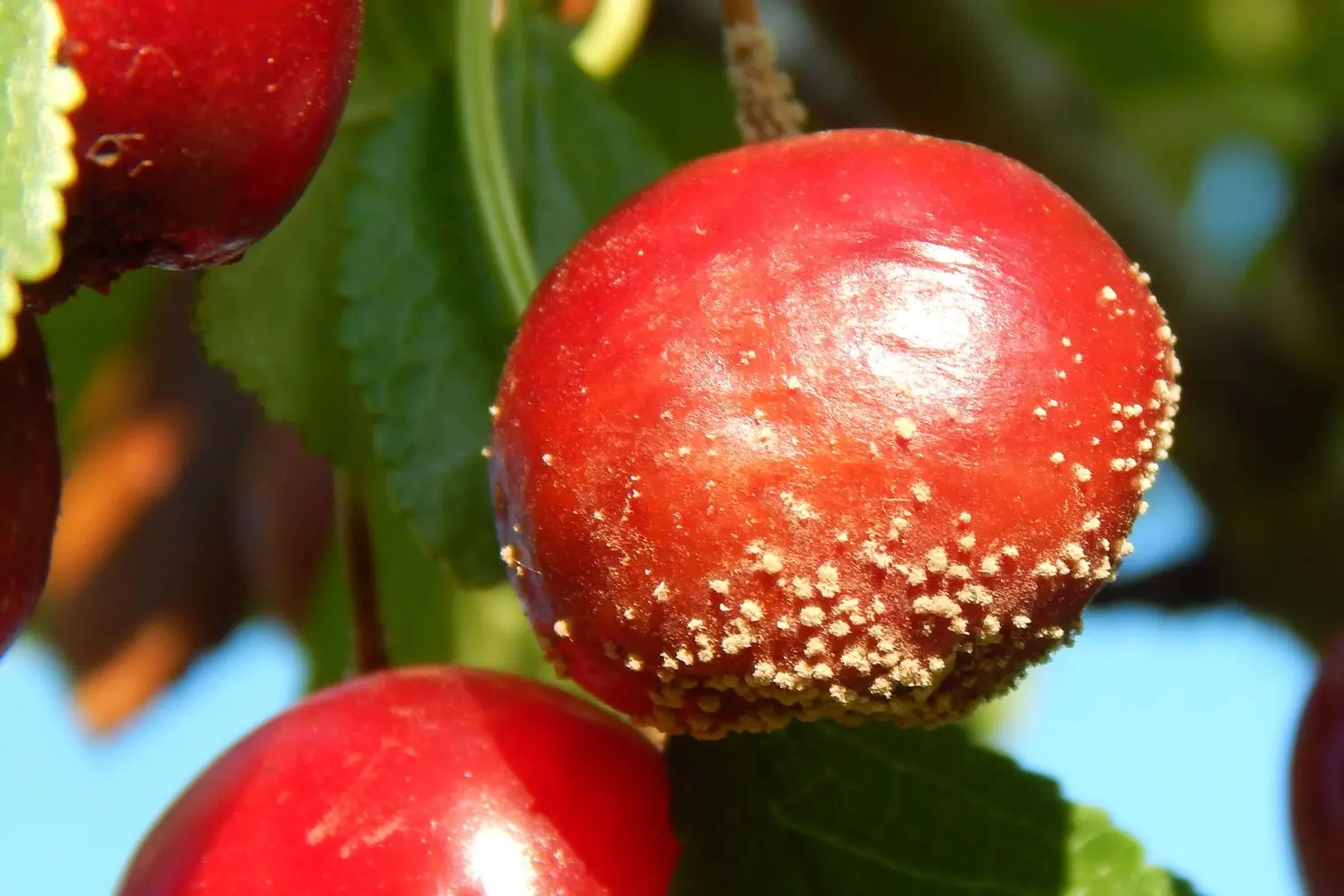The main objective of the study was to assess the improvement in fruit yield and quality obtained through assisted pollination using an electrostatic system. The study was conducted on a self-incompatible sweet cherry cultivar, cv. 'Regina', grown under rain protection covers in a commercial orchard.
The aim was to determine whether assisted pollination could compensate for the deficiency in pollen delivery, especially under plastic covers.
Methodology Used
Location and plant material: The study was carried out in a commercial orchard in San Clemente, Chile (35°32′ S, 71°27′ W, 232 m a.s.l.) during the 2019/2020 growing season. Four-year-old ‘Regina’ cherry trees grafted onto GiSelA-6 rootstock were used, trained with a central leader system, and spaced at 4.0 × 1.8 m (1388 trees/ha).
The pollinizer used was cv. ‘Skeena’, planted in full rows accounting for 20% of the total.
Treatments: Two experimental treatments were evaluated:
- Traditional pollination (control): 10 hives per hectare.
- Assisted pollination: 10 hives per hectare + two applications of 40 g/ha of pollen from the self-compatible cultivar ‘Lapins’ (Polen Chile™, Graneros, Chile), applied at 60% and 75% flower opening.
Assisted pollination system: Assisted pollination was performed using a V-Trellis orchard electrostatic sprayer (On Target Spray Systems, Mt. Angel, OR, USA) at a slow and constant speed, ensuring uniform tree coverage.
Evaluations
Fruit set and retention were assessed on 30 spurs per treatment (three per tree), each with at least 15 flowers.
Fruit set percentage was determined 25 days after full bloom.
Retention was calculated based on the number of fruits harvested.
Yield (kg/tree) was recorded per individual tree.
Fruit quality (weight, diameter, color, firmness, and total soluble solids – TSS) was assessed at harvest and after 30 days of cold storage (0 ± 1°C / 85%-90% RH).
Main Results
Fruit set: Assisted pollination increased fruit set from 14% to 20% compared to traditional pollination, representing a 40% increase.
Yield and retention: Assisted pollination led to a higher fruit weight per tree, resulting in an average production increase of 3 t/ha.
However, no statistically significant differences were found compared to the control. Fruit retention also increased by 3%, but again without significant differences.
Fruit quality: Fruits from assisted pollination showed a more advanced ripening stage at harvest. After storage, ripening indices showed only slight differences between treatments, maintaining values similar to those at harvest.
In detail:
- Color: more advanced (4.4 vs. 4.0 on a 1–5 scale).
- Firmness: slightly lower (262 vs. 285 g/mm).
- Diameter: no significant difference.
Weather conditions: During flowering, weather conditions were favorable for bee flight and fruit set, with only one day of bee inactivity due to rain.
Conclusions
Assisted pollination in ‘Regina’ cherry trees grown under rain covers increased fruit set, although there were no statistically significant differences in total yield compared to traditional pollination.
Ripening indices were slightly more advanced with assisted pollination, and post-harvest storage showed minimal differences between treatments.
Assisted pollination proves to be an effective strategy to improve fruit set in ‘Regina’ cherries, especially when pollen availability is limited – such as in the presence of plastic covers.
This technique appears capable of compensating for the negative effects of covers on bee activity and natural pollination.
Reference: Sánchez-Contreras, J., Palma, M., & Yuri, J. A. (2025). Assisted pollination by means of an electrostatic system in the production and quality of sweet cherries cv. ‘Regina’. Folia Horticulturae, 37(2), 1–6. https://doi.org/10.2478/fhort-2025-0013
Jesus Alonso
El Mundo De Las Cesezas
Cherry Times - All rights reserved













